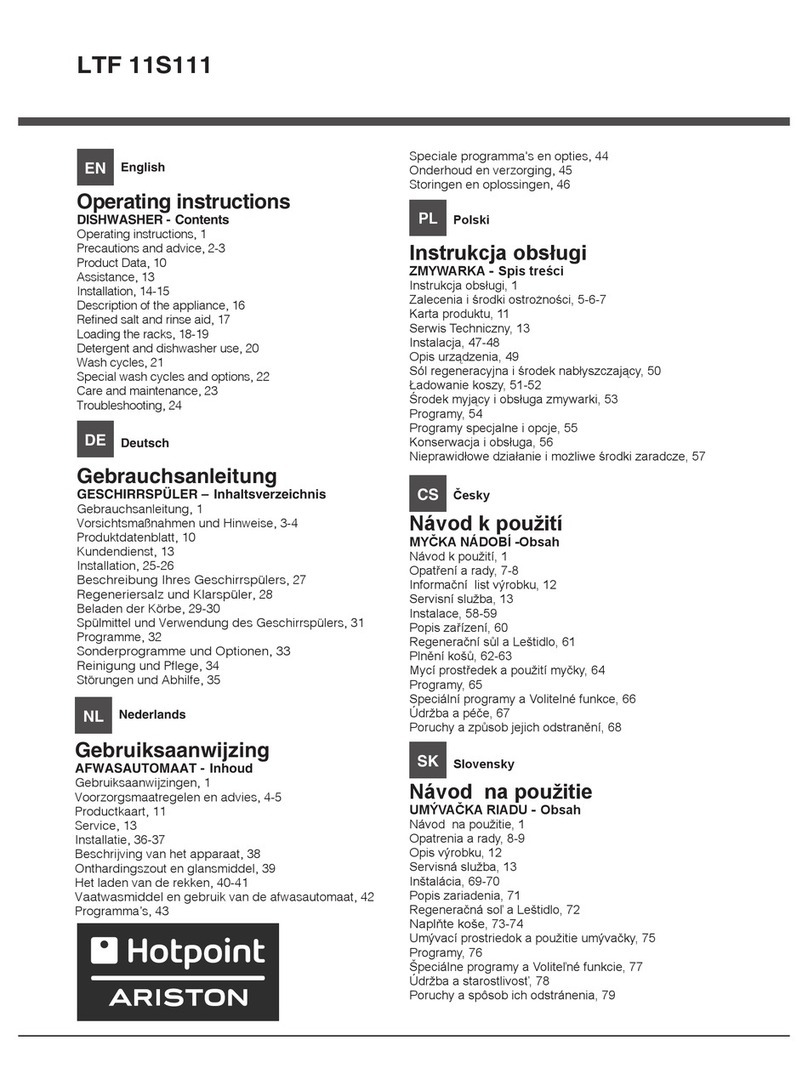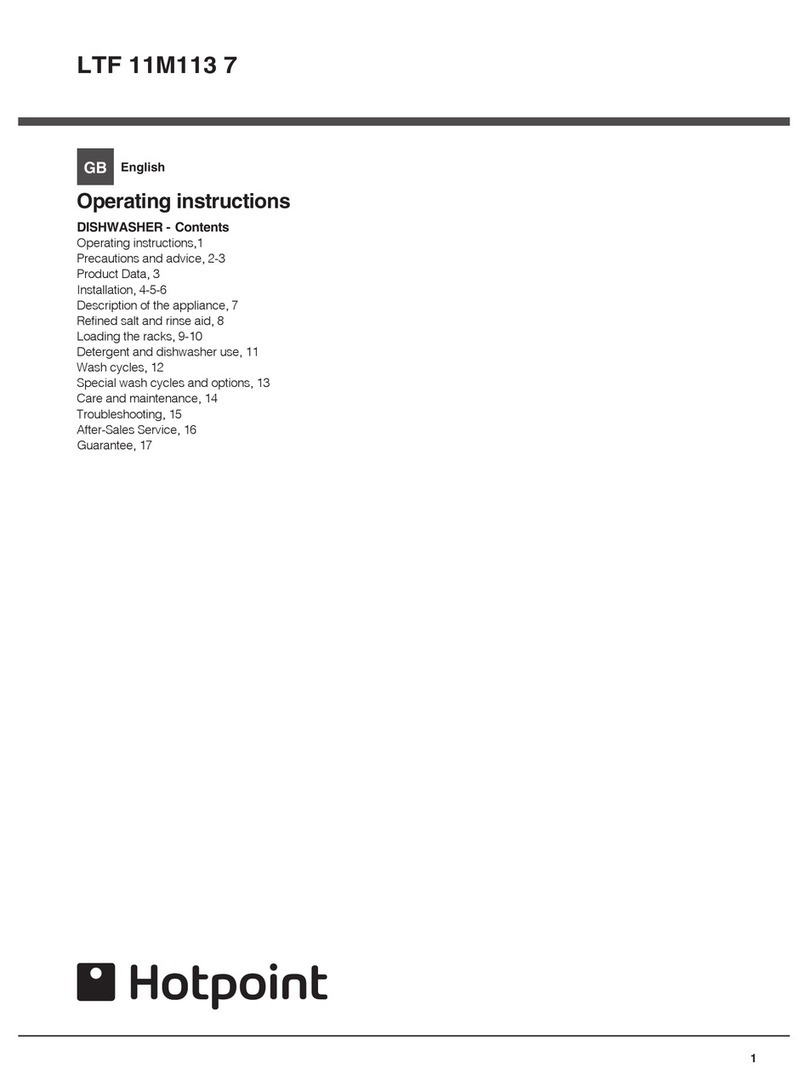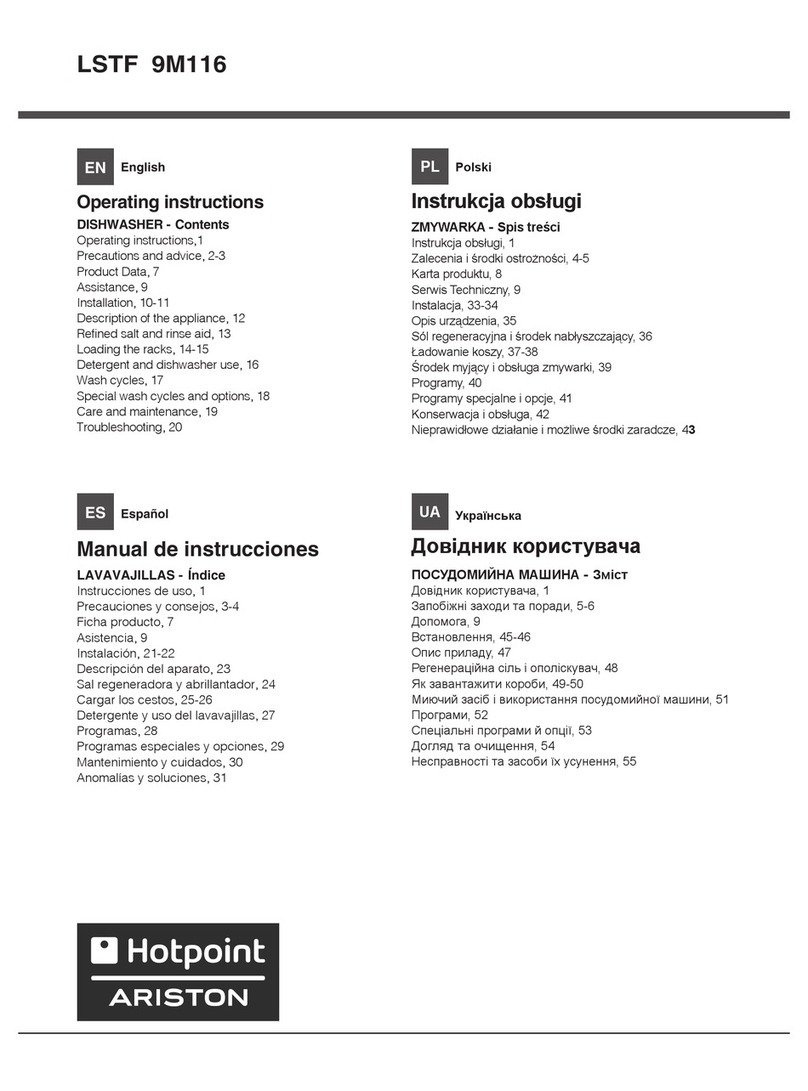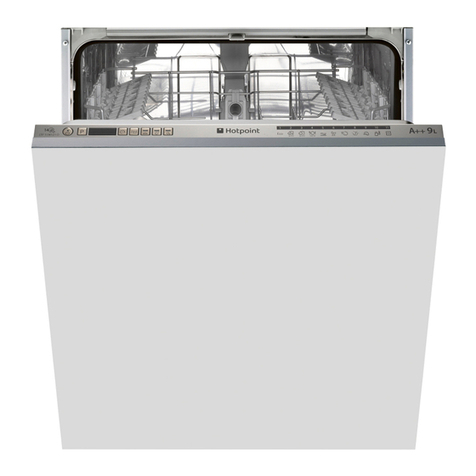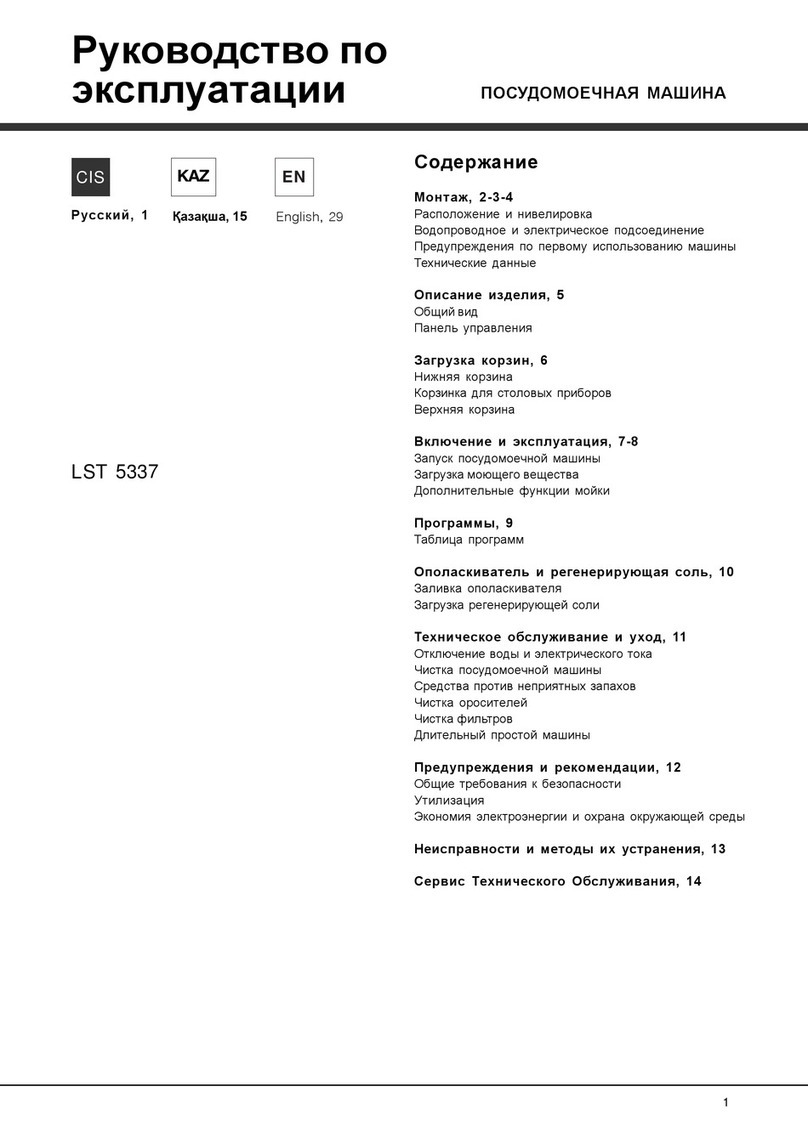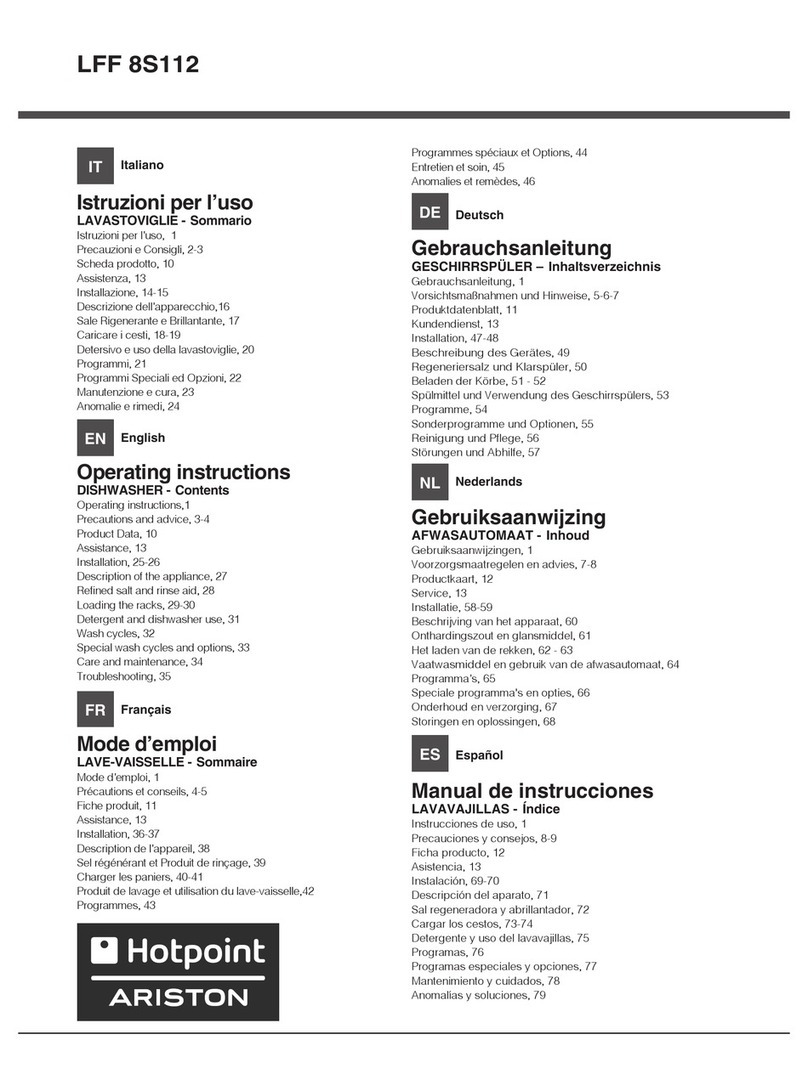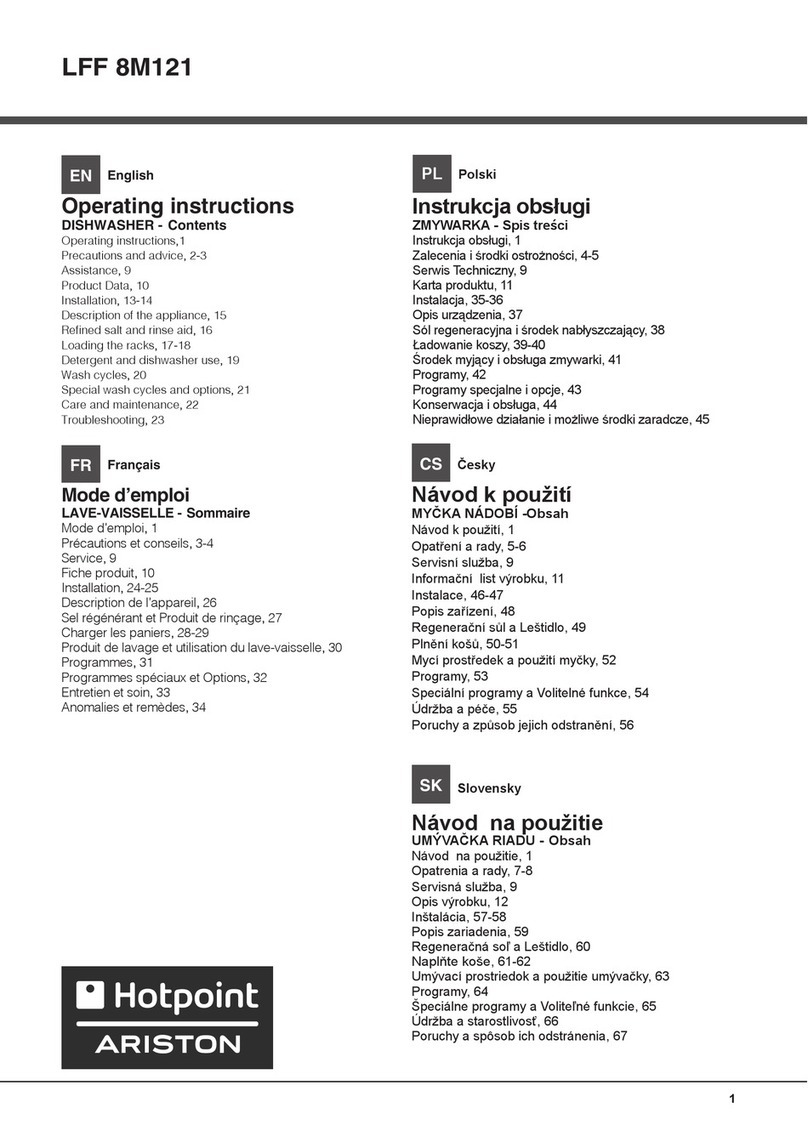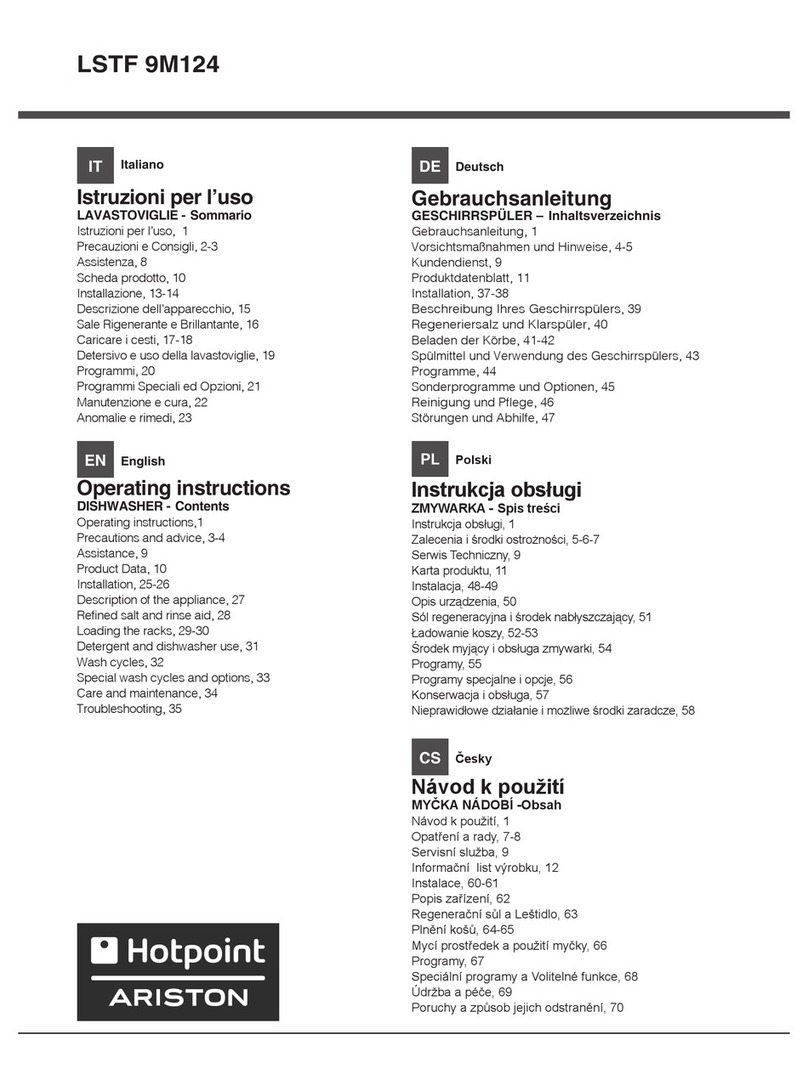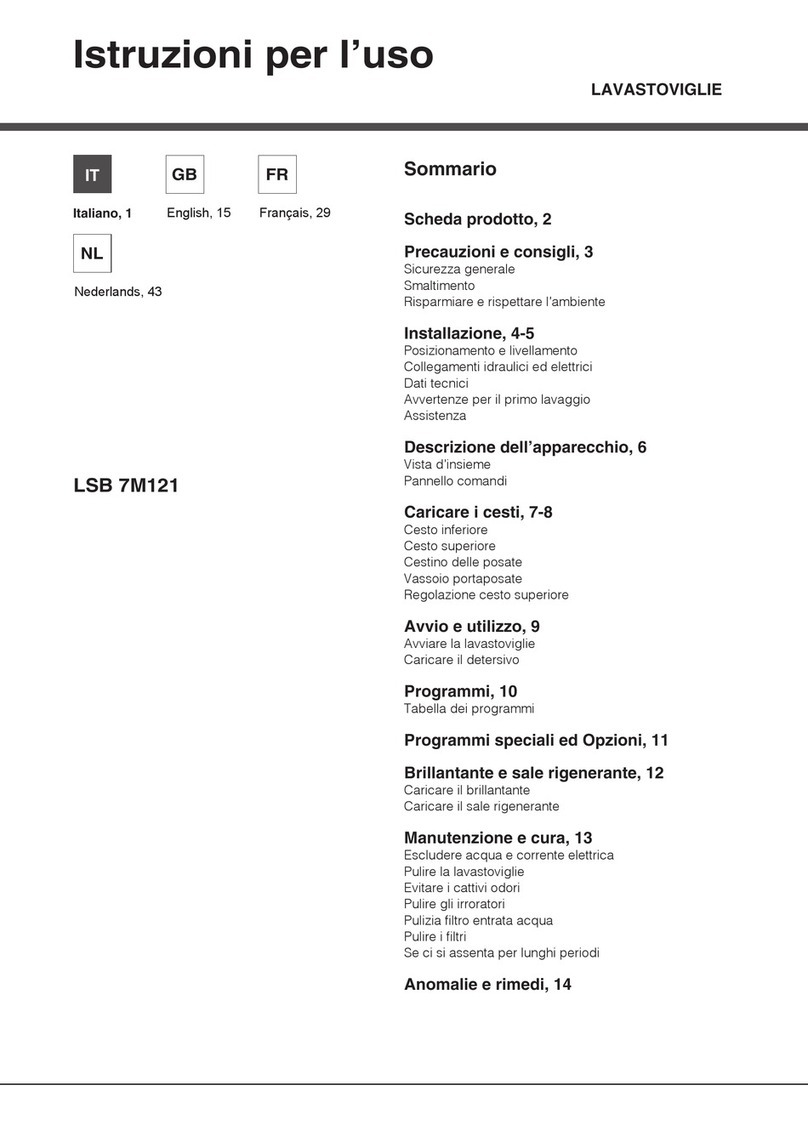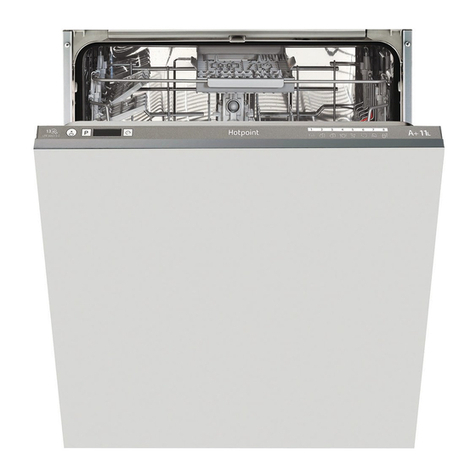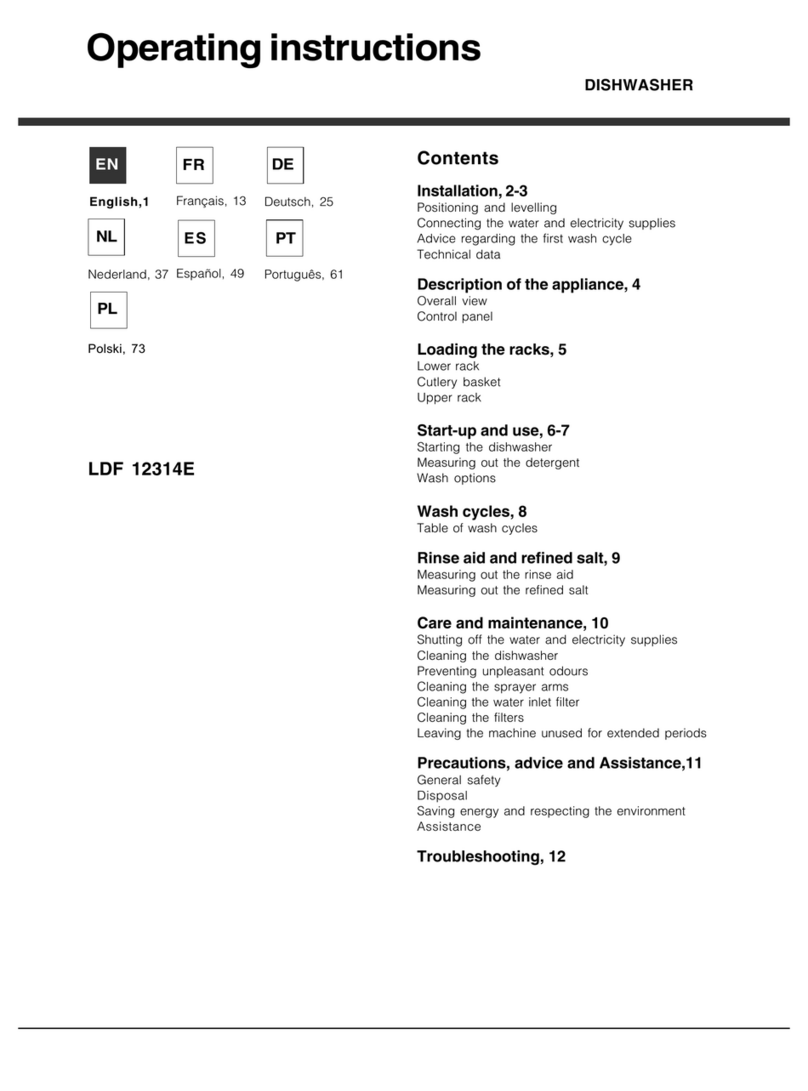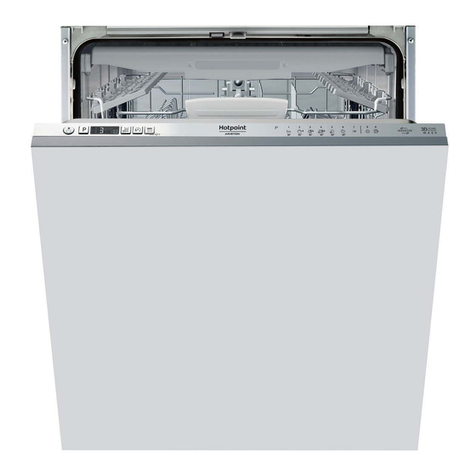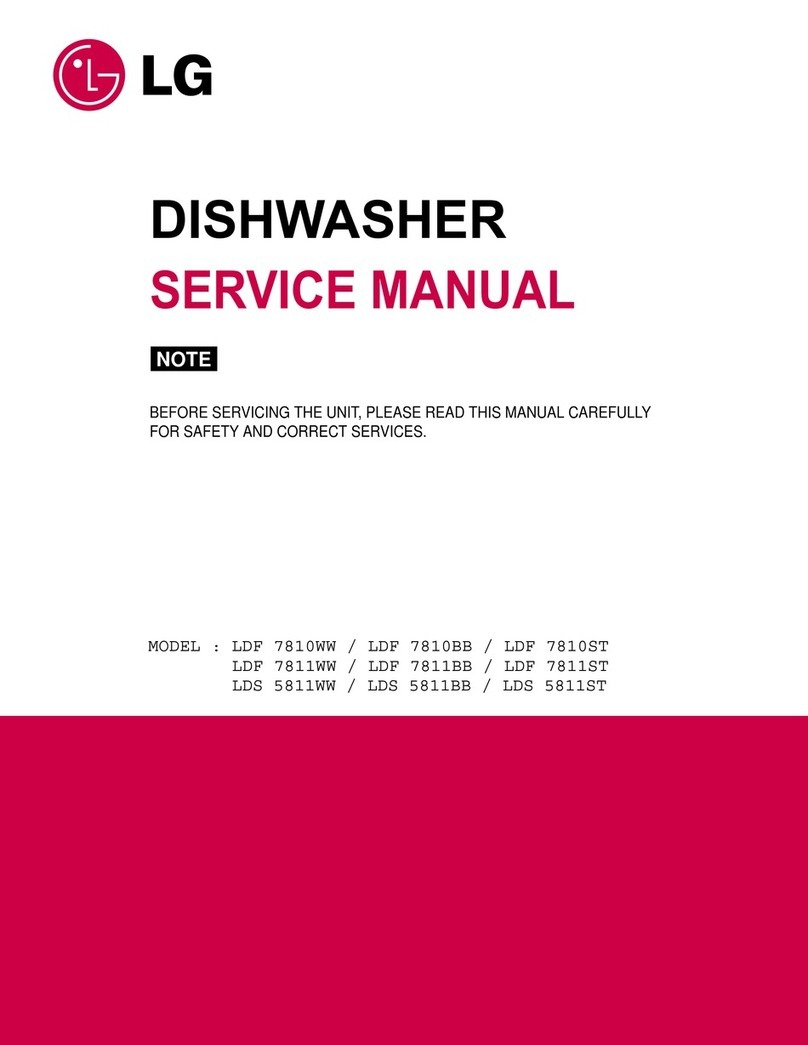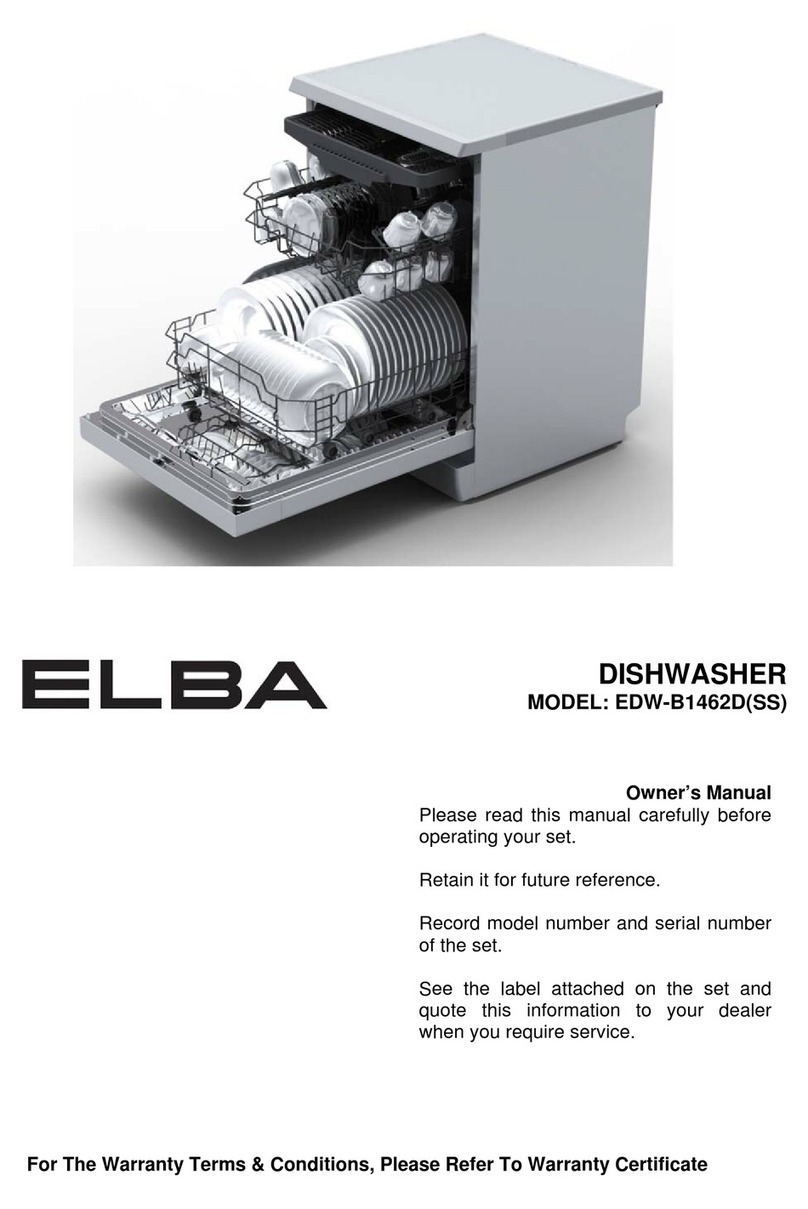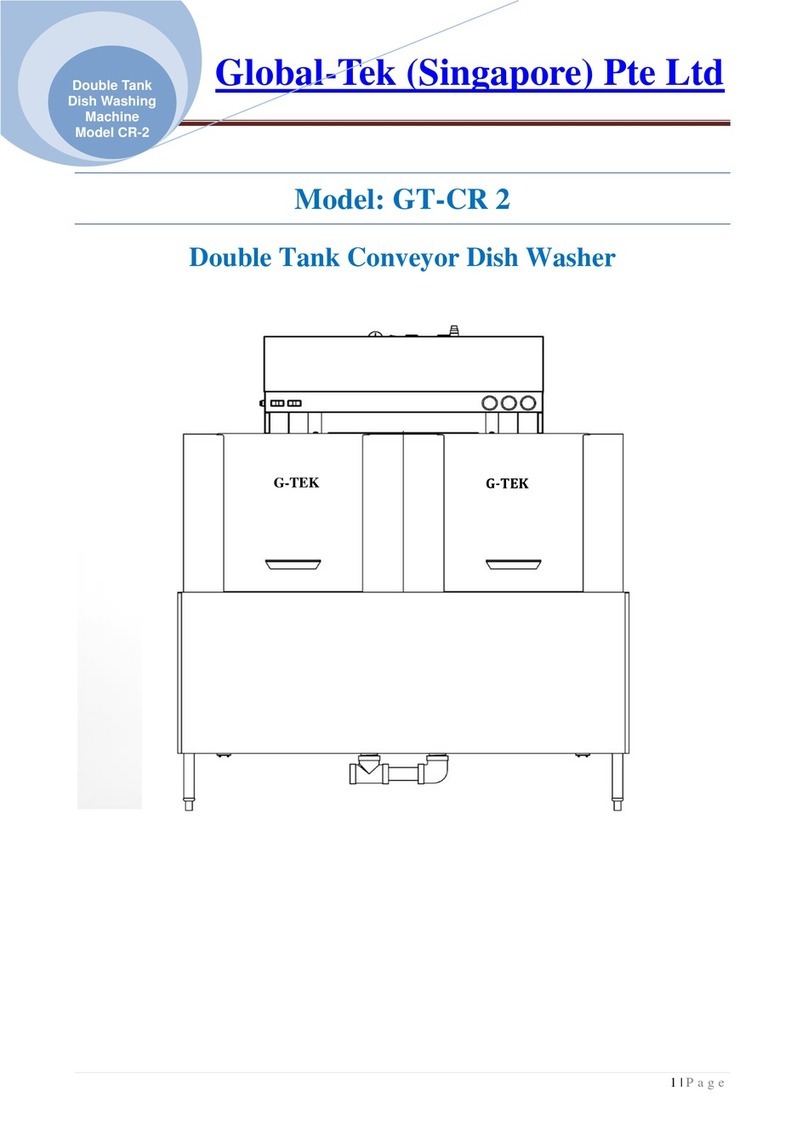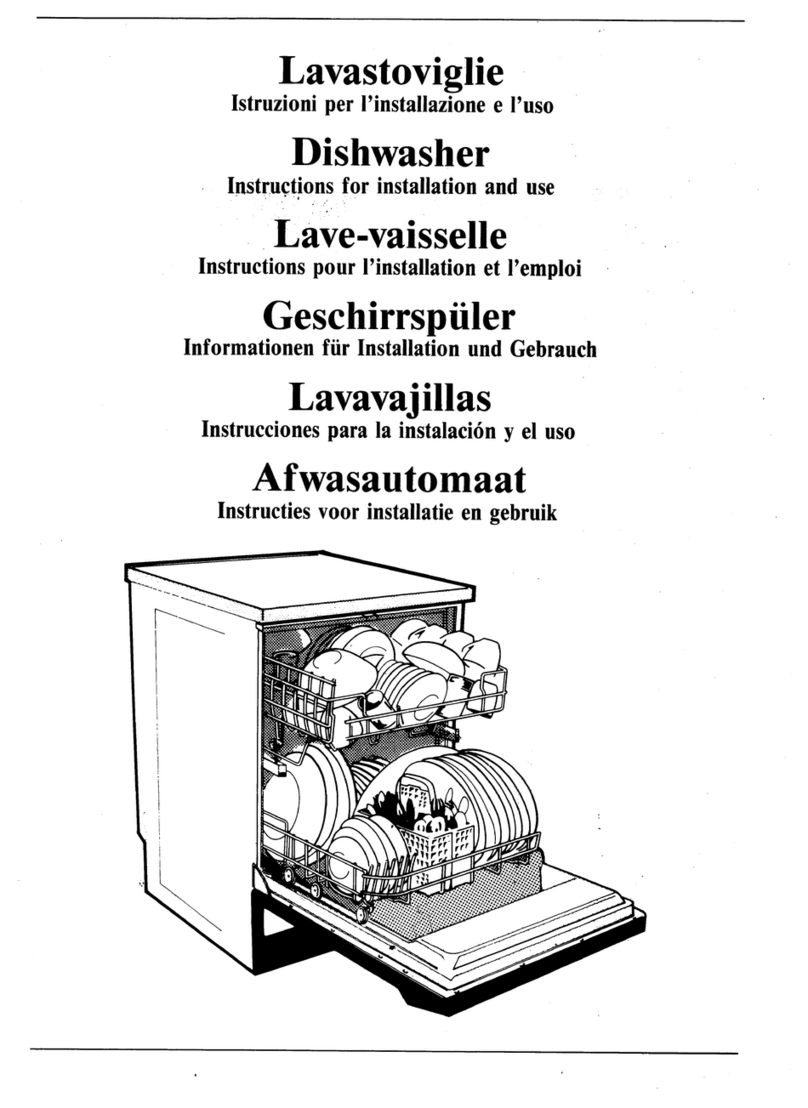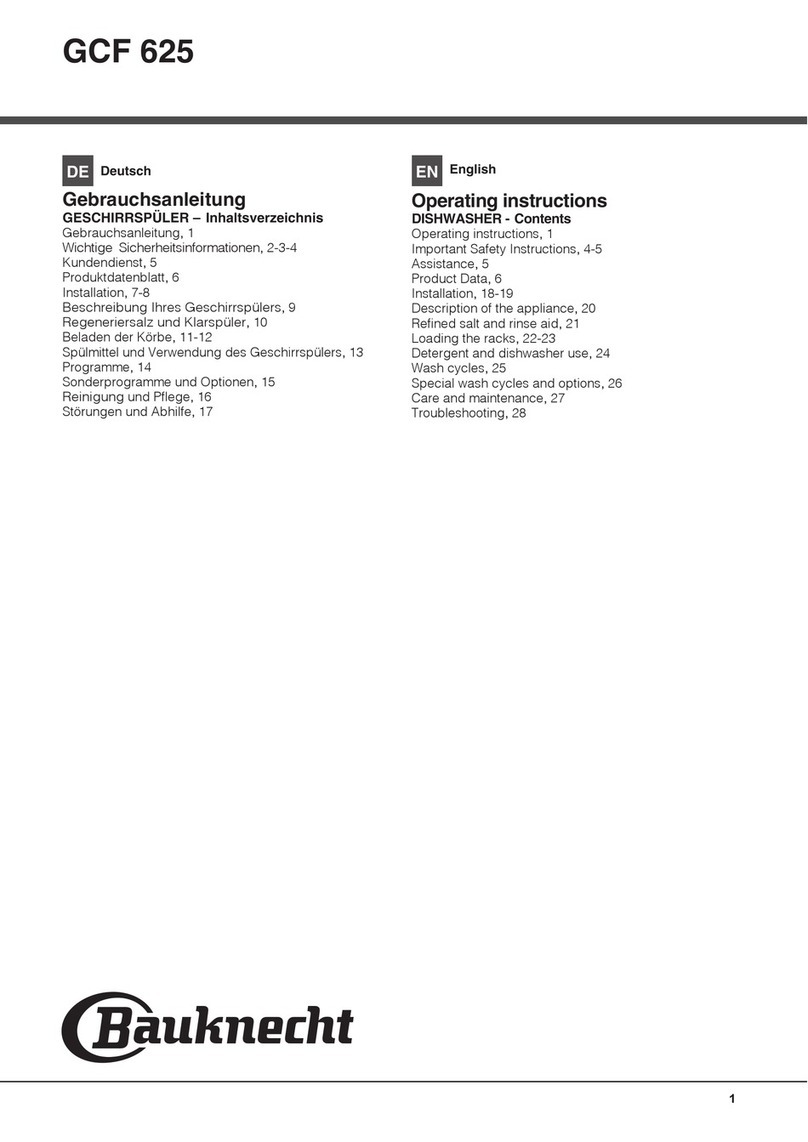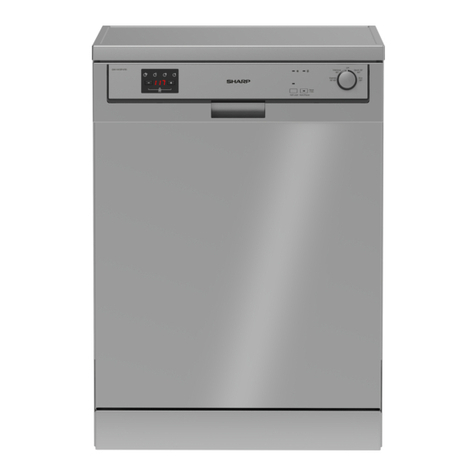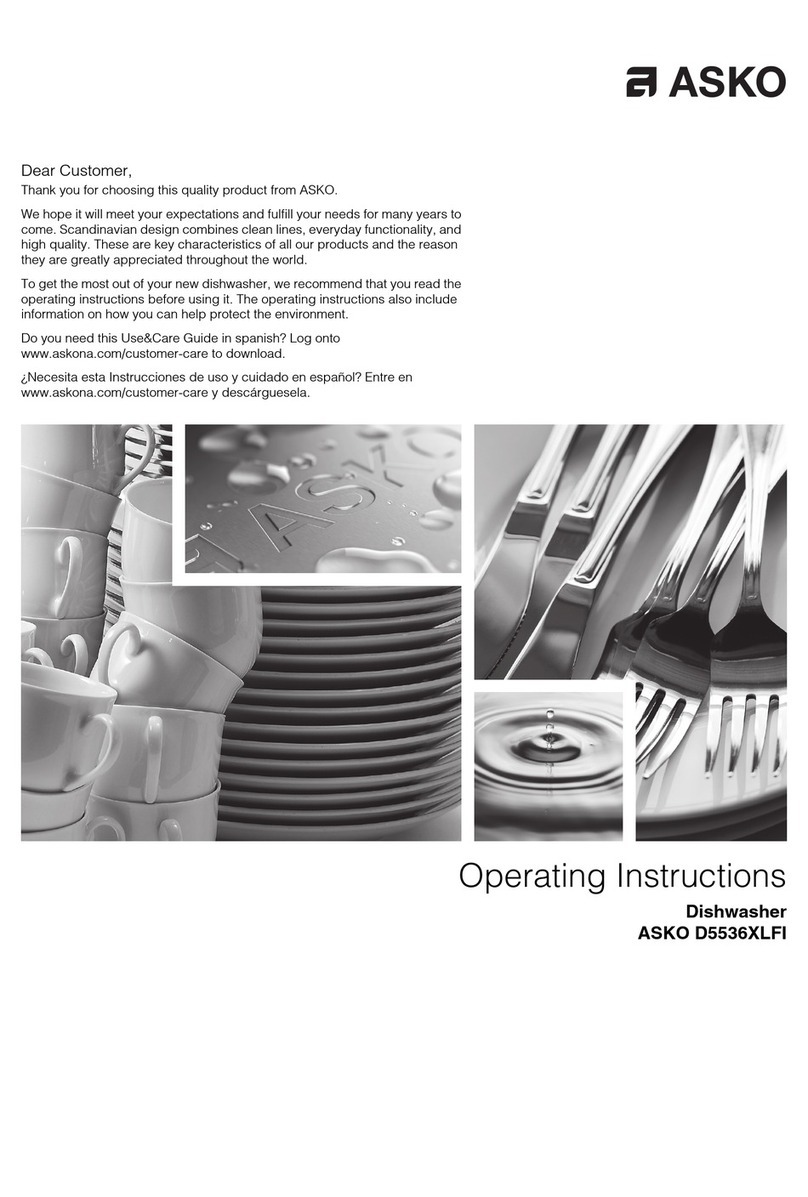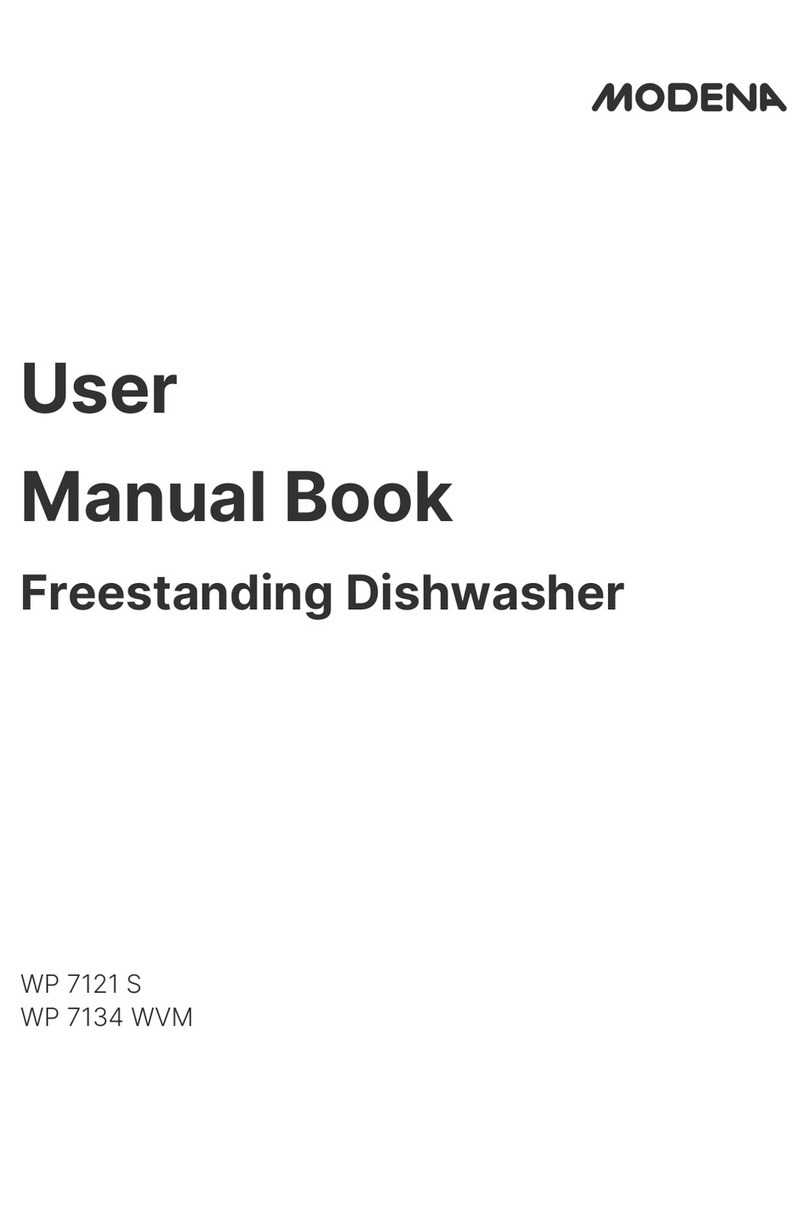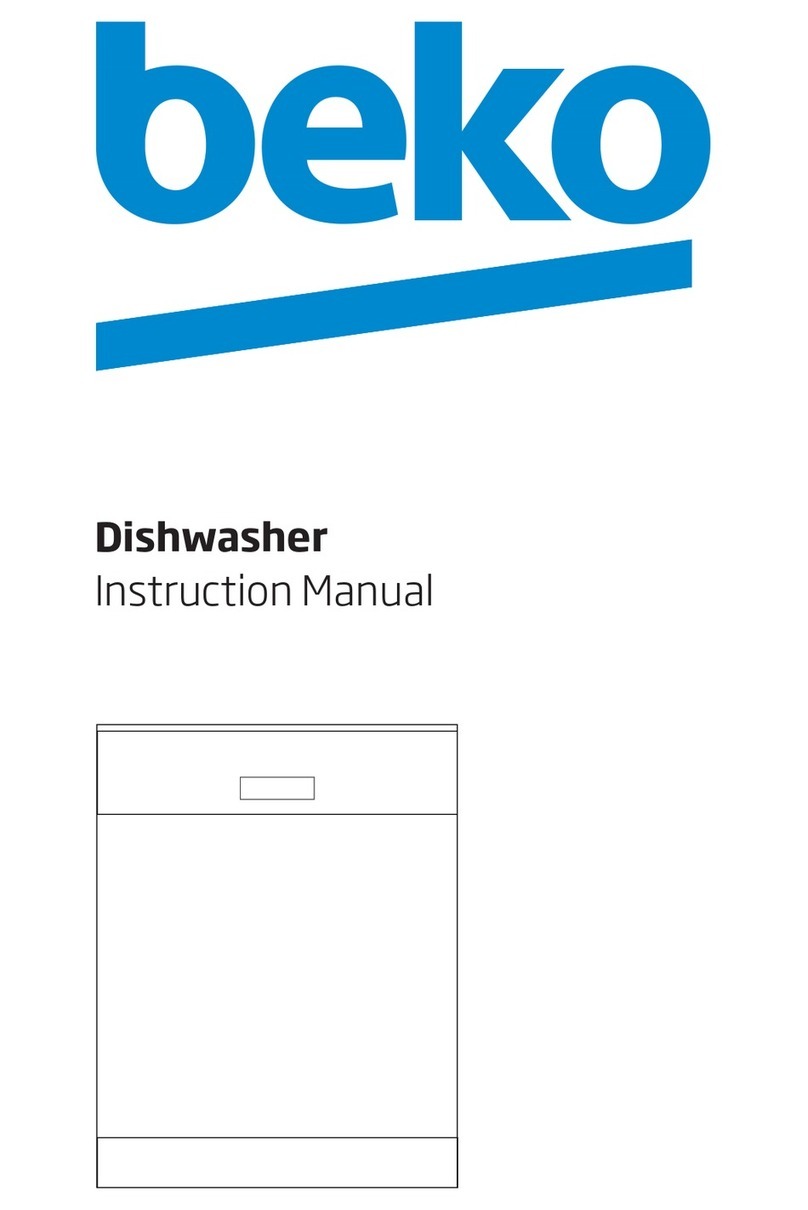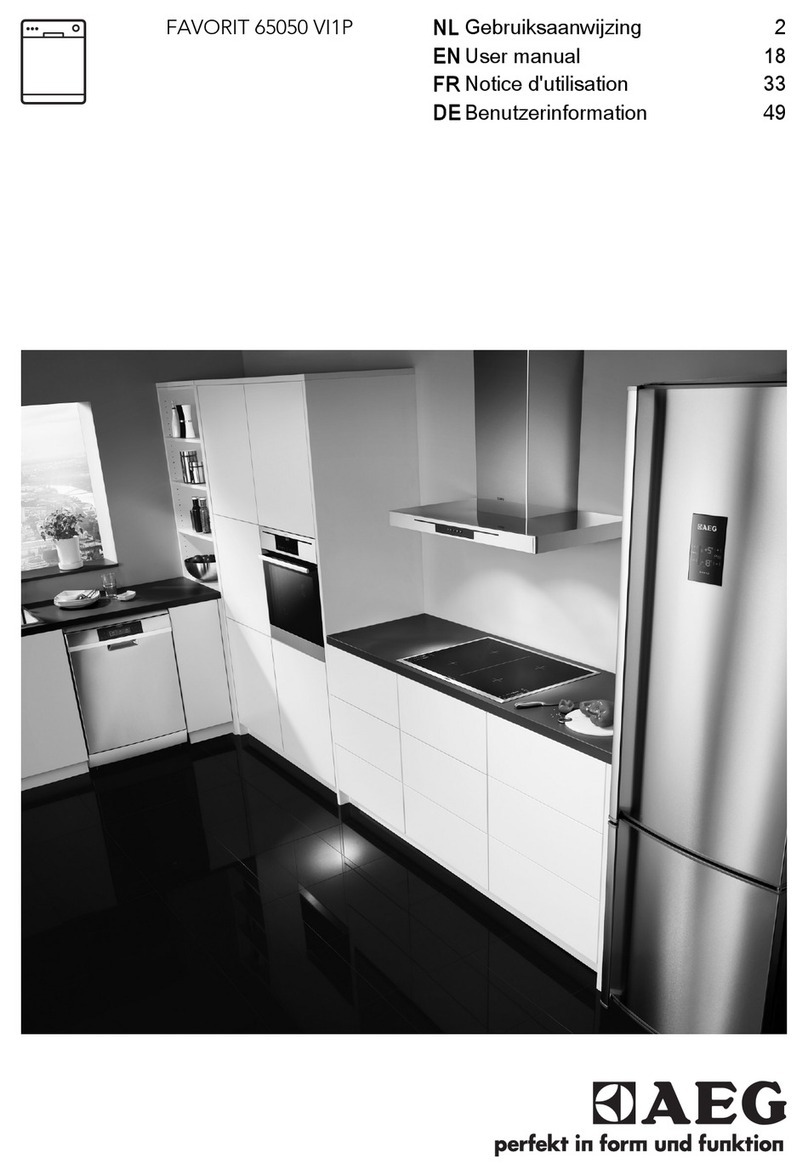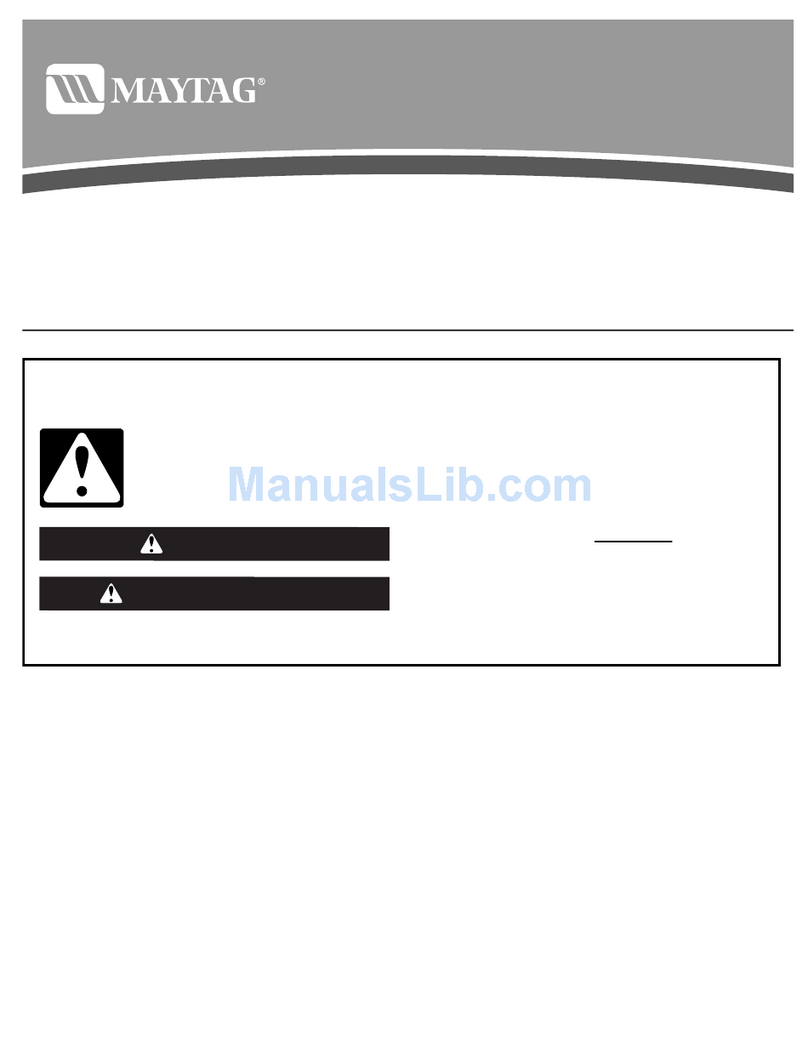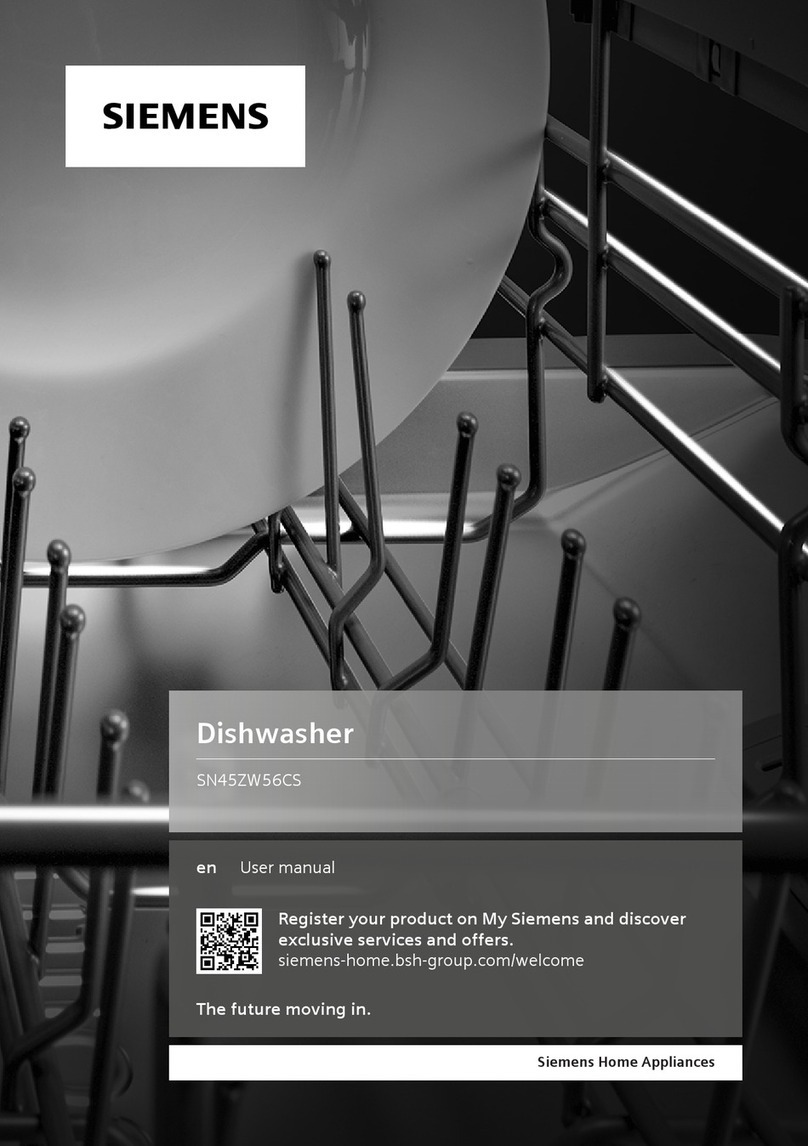
EN
9
Rinse aid and refined salt
Only use products which have been
specifically designed for dishwashers.
Do not use table salt or industrial salt, or
washing up liquid.
Follow the instructions given on the packaging.
If using a multi-functional product it is not necessary to
add rinse aid; however, we recommend that you add salt,
especially if you live in an area where the water is hard
or very hard. Follow the instructions given on the
packaging.
If you do not add salt or rinse aid, the LOW
SALT*and LOW RINSE AID*indicator lights
remain lit.
Measuring out the rinse aid
Rinse aid makes it easier for the crockery to dry, as water
runs off surfaces more readily and therefore does not leave
streaks or marks.
The rinse aid dispenser should be filled:
•When the LOW RINSE AID* indicator light on the control
panelisilluminated; 1.Openthedispenserbyturningthe
lid(G)inananticlockwisedirection.
2.Pourintherinseaid,makingsureit
doesnotoverflowfromthe
dispenser.Ifthishappens,cleanthe
spillimmediatelywithadrycloth.
3.Screwthelidbackon.
NEVERpourtherinseaiddirectly
into the appliance tub.
Adjusting the amount of rinse aid
If you are not completely satisfied with the drying results,
you may adjust the quantity of rinse aid used. Use a
screwdriver to turn the dosage adjuster (F) to one of the 6
pre-set positions (the default position is set to 4):
• If there are streaks on the crockery, set the adjustment
device to a lower number (1-3).
• If drops of water remain on the crockery or if there are
limescale marks present after the cycle has finished, set
the adjuster to a higher number (4-6).
Setting the water hardness
Every dishwasher is equipped with a water softener which, by
using refined salt designed especially for this type of
appliance,supplieswaterwithoutlimescalewhichisthenused
to wash the crockery.
This dishwasher offers a setting which helps to reduce
pollutionandoptimiseswashingperformanceinaccordance
withthe water hardness level in your area. This information can
beobtained from the organisation which supplies your
householdwithwater.
- Switch on the appliance by pressing the ON/OFF button.
- Press the PP
PP
P button and hold for a few seconds; two short
beepswillsound,Thetext"WATER HARDNESSWATER HARDNESS
WATER HARDNESSWATER HARDNESS
WATER HARDNESS" will appear
on the display and the set hardness number will also flash
slowly on the display (the water softening system is set by
default to number 33
33
3).
- Press the DELAYED START button (levels 1 to 5) or the
HALF LOAD button (levels 5 to 1) repeatedly, until the
desired hardness level has been reached (1-2-3-4-5*, see
hardness table). You will be able to scroll through a maximum
of 5 levels. Press the PP
PP
P button to confirm.
To exit the function, wait a few seconds or press one of the
option buttons*, orswitch off the machine usingthe ON/OFF
button.
Even if using multi-functional tablets, the salt dispenser should
stillbefilled.
(°dH = hardness measured in German degrees - °f =
hardnessmeasured in French degrees - mmol/l = millimoles
per litre)
Measuring out the refined salt
In order to achieve the best possible results using a wash
cycle, make sure that the dispenser is never empty.
Refined salt removes limescale from the water, thus
avoiding the formation of deposits on crockery.
The salt dispenser is located in the lower part of the
dishwasher (
see Description
) and should be filled:
• When the green float*cannot be seen by simply looking at
the cap of the salt dispenser.
• When the LOW SALT*indicatorlighton the control panel is
illuminated; 1. Remove the lower rack and unscrew
the container cap (anticlockwise).
2. The first time you do this: fill the water
tank right up to its edge.
3. Position the funnel*(
see figure)
and fill
the salt container right up to its edge (this should hold
approximately 1 kg); it is not unusual for a little water to leak
out.
4. Remove the funnel* and wipe any salt residue away from
the opening; rinse the cap under running water and then
screw it on, the head facing downwards so as to let the
water flow out of the four cracks which are arranged in a
star shape on the lower part of the cap. (the container cap
with the green float*)
It is advisable to perform this procedure every time you
add salt to the container.
Make sure the cap is screwed on tightly, so that no
detergent can get into the container during the wash cycle
(this could damage the water softener beyond repair).
When necessary, measure out the salt before a wash
cycle so that any saline solution which has leaked out of the
salt dispenser is removed.
*Only available in selected models.
G
F
Water Hardness Table Average salt container
capacity duration**
Level °dH °fH mmol/l months
1 0 - 6 0 - 10 0 - 1 7 months
2 6 - 11 11 - 20 1,1 - 2 5 months
3 12 - 17 21 - 30 2,1 - 3 3 months
4 17 - 34 31 - 60 3,1 - 6 2 months
5*
34 - 50
61 - 90
6,1 - 9
2/3 weeks
For values between 0°f and 10°f, we do not recommend the
use of salt.
*this setting may cause a slight increase in the duration of
the cycles.
**for 1 wash cycle per day.
